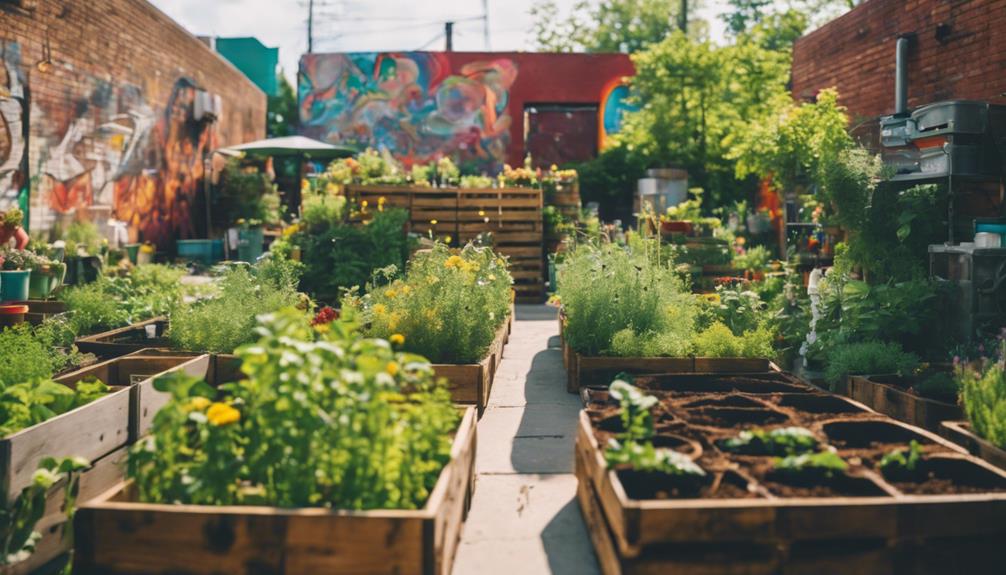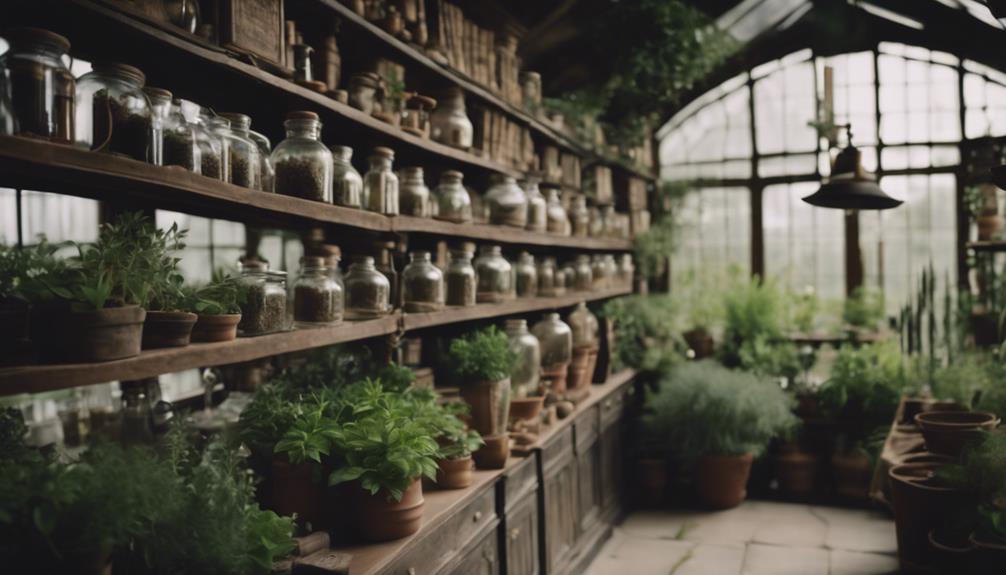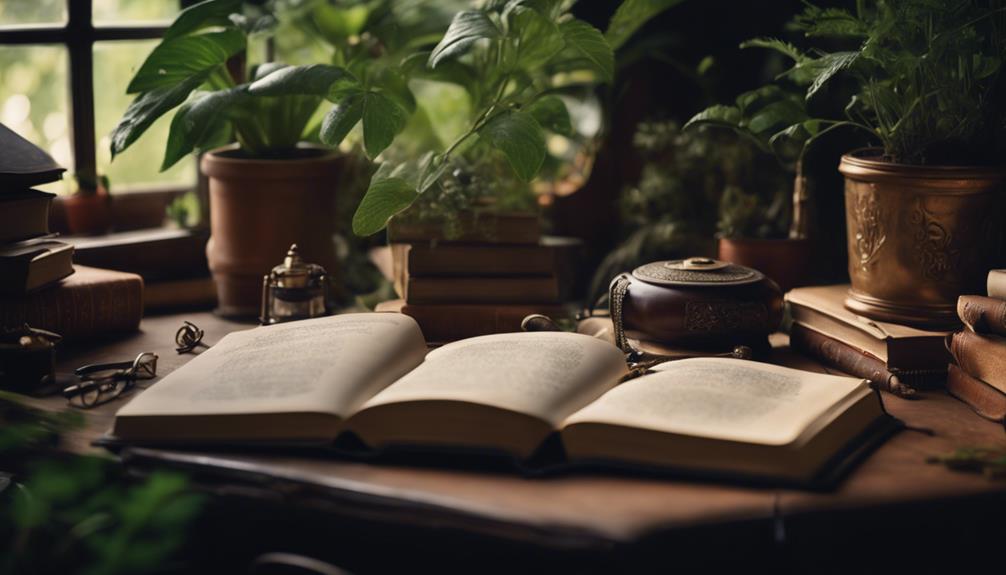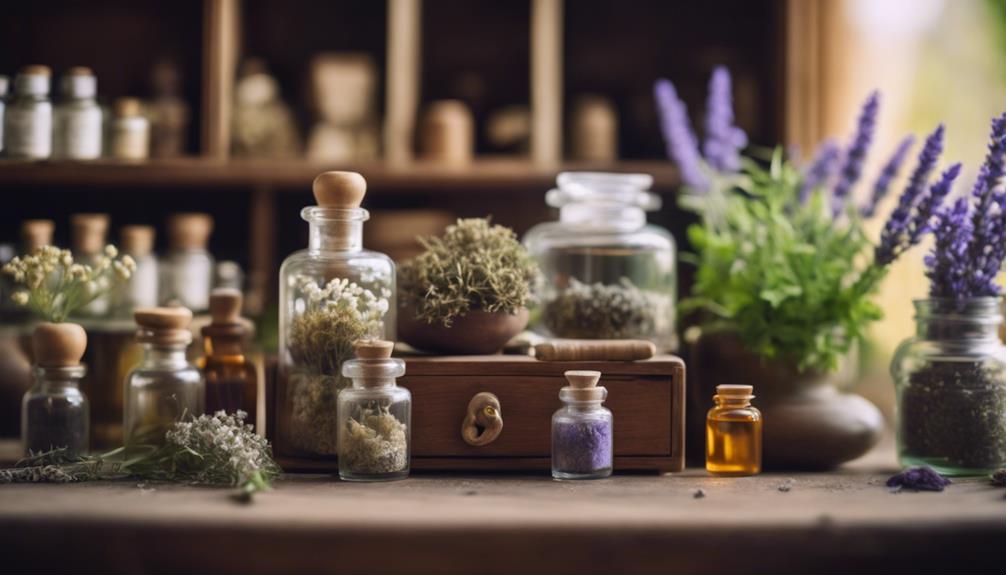As we explore the thriving herbology practices in Detroit, we're discovering a community that's embracing traditional remedies, cultural heritage, and sustainable practices to foster a holistic approach to wellness. Local herbalists are offering workshops, educational resources, and consultations to empower individuals to take control of their health. Community gardens and centers are hubs for herbal education, promoting cultural reconnection and environmental stewardship. With a focus on decolonizing medicine and ancestral healing practices, Detroit's herbology practices are driving a movement towards healthier, more sustainable living – and there's more to uncover.
Key Takeaways
• Detroit's herbal remedies market is growing, driven by the demand for natural health and wellness solutions.
• Local herbalists offer workshops, teaching residents to harness plant power for healing and thriving.
• Holistic healing centers like HWB Detroit and Mama Ravin's provide educational resources and community-focused services.
• Educational opportunities include herbal remedies training, botanical medicine classes, and hands-on workshops.
• Community gardens and green spaces serve as hubs for herbal education, fostering cultural reconnection and environmental stewardship.
Herbal Remedies in Detroit Communities
As we explore the vibrant communities of Detroit, we're witnessing a surge in demand for herbal remedies that address our health and wellness needs. In response, local herbalists are stepping up to offer workshops and demonstrations on making herbal preparations.
This growing interest in herbal medicine is empowering individuals to take control of their well-being in Detroit. We're seeing residents explore the healing properties of common herbs as a crucial healthcare option. This shift towards herbal remedies is also driven by efforts to decolonize medicine and reconnect with cultural healing practices.
By embracing herbal medicine, Detroit communities are reclaiming their health and wellness. We're excited to see this movement grow, as it promotes a holistic approach to healthcare that's rooted in the community's cultural heritage.
As we continue to support local herbalists and their initiatives, we're confident that herbal remedies will remain an essential part of Detroit's thriving health and wellness landscape.
Holistic Healing Services and Centers

We're fortunate to have holistic healing services and centers like HWB Detroit and Mama Ravin's in our community, where we can access a range of educational resources and healing opportunities. These centers offer holistic healing services that focus on community healing, herbal education, and self-care practices.
We can participate in workshops that teach us about traditional healing methods, empowering us to take control of our health and well-being. Organizations like Herbalists Without Borders provide opportunities for us to learn about various healing modalities, promoting education and community collaboration.
By decolonizing medicine and reclaiming traditional healing methods, we're reclaiming our health and wellness. The emphasis on sustainability and self-sufficiency in Detroit's herbal medicine practices is also remarkable, as it highlights the importance of using locally available plants for healing.
Through these holistic healing services and centers, we're fostering a culture of community healing and self-care, which is essential for our overall well-being.
Herbalism Education and Workshops
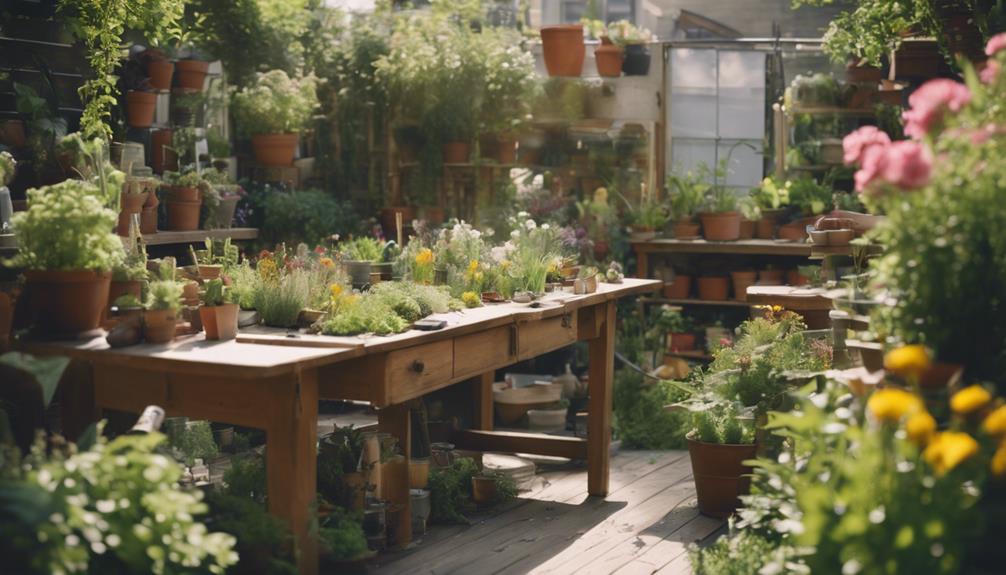
As we explore the world of herbalism in Detroit, we're excited to learn about the various educational opportunities available to us.
We can enroll in workshops that focus on herbal remedies training, where we'll gain hands-on experience in creating our own herbal preparations.
We'll also have the chance to participate in botanical medicine classes, which will deepen our understanding of the healing properties of plants.
Herbal Remedies Training
We explore the world of herbalism through Herbal Remedies Training's workshops, where we learn to harness the healing properties of common herbs and create our own herbal preparations. These workshops provide hands-on experience, empowering us with knowledge of herbal medicine practices.
We investigate the basics of herbalism, discovering how to make herbal remedies that promote sustainable and accessible healthcare. By understanding the healing properties of herbs, we can create effective remedies that cater to our specific needs. The emphasis is on sustainable healthcare options, making herbal medicine a viable choice for a healthier lifestyle.
Through Herbal Remedies Training, we gain confidence in our ability to create herbal preparations, taking control of our health and wellbeing. By combining theory and practice, we develop a deeper understanding of herbalism, realizing its full potential.
With Herbal Remedies Training, we're equipped with the skills and knowledge to incorporate herbal medicine into our daily lives, fostering a healthier and more sustainable future.
Botanical Medicine Classes
In Detroit's thriving herbalism community, we're taking our herbalism skills to the next level with Botanical Medicine Classes. Here, hands-on learning experiences and expert guidance come together to foster a deeper understanding of botanical medicine.
Through these classes, we're making progress in our herbalism journey, crafting herbal remedies and exploring the therapeutic benefits of nature. We're not just learning about plant-based healing; we're doing it hands-on, creating remedies and connecting with local experts in the field.
These workshops empower us to take control of our health through sustainable and accessible healthcare options. We're not just students; we're active participants in our own wellness.
By promoting community healing, cultural reconnection, and a deeper understanding of herbal traditions in Detroit, these classes are more than just educational sessions – they're a movement towards a healthier, more sustainable future.
With Botanical Medicine Classes, we're bridging the gap between traditional herbalism and modern healthcare, making sustainable healthcare options a reality for our community.
Local Herbalists and Their Practices
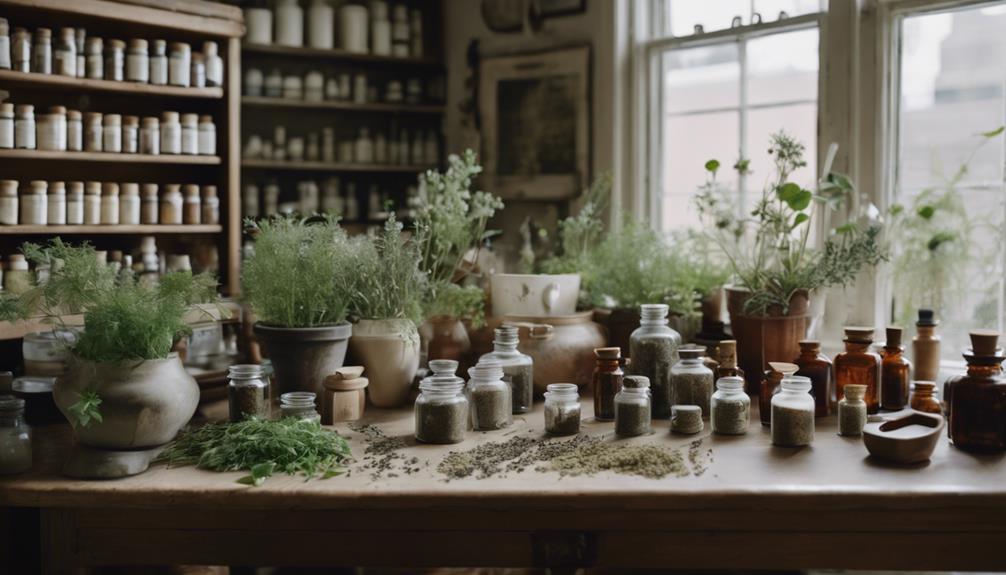
As we explore the thriving herbology practices in Detroit, we're excited to highlight the impact of local herbalists and their practices.
We'll take a closer look at how herbal remedies are being put into action, making a tangible difference in the community.
Herbal Remedies in Action
As we explore the thriving herbology practices in Detroit, we're excited to investigate the world of herbal remedies in action.
Local herbalists like Lottie Spady of Earthseed Detroit are revitalizing the community by sharing their expertise in herbal medicine making techniques and inspiring others to follow suit. They're not only preserving cultural healing practices but also promoting community healing initiatives through organizations like HWB Detroit and Herbalists Without Borders.
These initiatives focus on herbal education, empowering individuals to take control of their health and well-being. By embracing traditional healing methods, herbalists in Detroit are pioneering a new wave of sustainability and self-sufficiency.
Through workshops and classes, they're teaching people how to harness the power of plants to heal and thrive. As we witness the resurgence of herbalism in Detroit, we're reminded that herbal remedies in action aren't just a trend, but a movement towards a healthier, more holistic future.
Community Engagement Matters
We're witnessing a surge of community engagement in Detroit, where local herbalists like Mama Ravin are reclaiming ancestral healing practices and sharing Aboriginal knowledge that's been passed down through generations. This resurgence is fueled by a desire to decolonize medicine and reconnect with traditional healing methods. As a result, community engagement is thriving, with organizations like HWB Detroit and Herbalists Without Borders offering workshops on herbal education and community healing.
Some key initiatives driving this movement include:
- Collaborations with local organizations to spread herbal knowledge and empower individuals to take control of their health and well-being
- Efforts to preserve and promote cultural healing practices, such as ancestral healing practices and Aboriginal knowledge
- A focus on providing accessible herbal education, enabling community members to make informed decisions about their health
Through these initiatives, we're seeing a shift towards embracing ancestral and cultural healing practices in Detroit. By supporting local herbalists and community-led initiatives, we can work together to create a healthier, more empowered community.
Custom Blends and Consultations
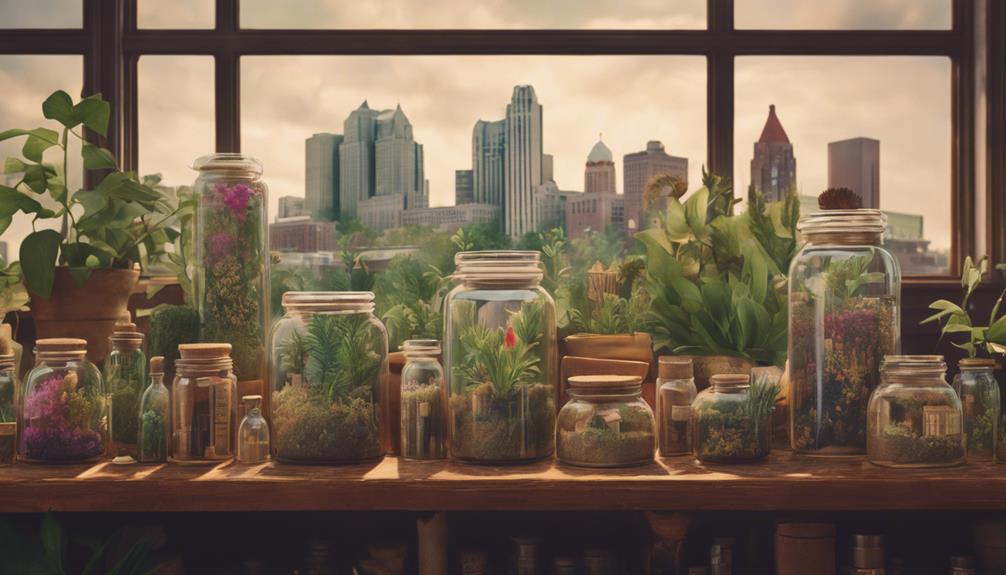
Through personalized consultations, Detroit's skilled herbalists craft custom blends tailored to our unique needs and health goals, ensuring effective herbal solutions that address specific concerns and promote overall well-being.
We've found that these consultations involve in-depth discussions on our lifestyle, diet, and health goals, allowing herbalists to create custom blends that support our individual needs.
By taking a holistic approach to healing, Detroit's herbalists provide tailored recommendations for herbs, teas, and remedies to address specific health concerns.
We appreciate how these consultations help us navigate the world of herbal medicine, guiding us towards holistic healing. With expertise in creating custom blends, Detroit's herbalists empower us to take control of our health.
Community Gardens and Green Spaces
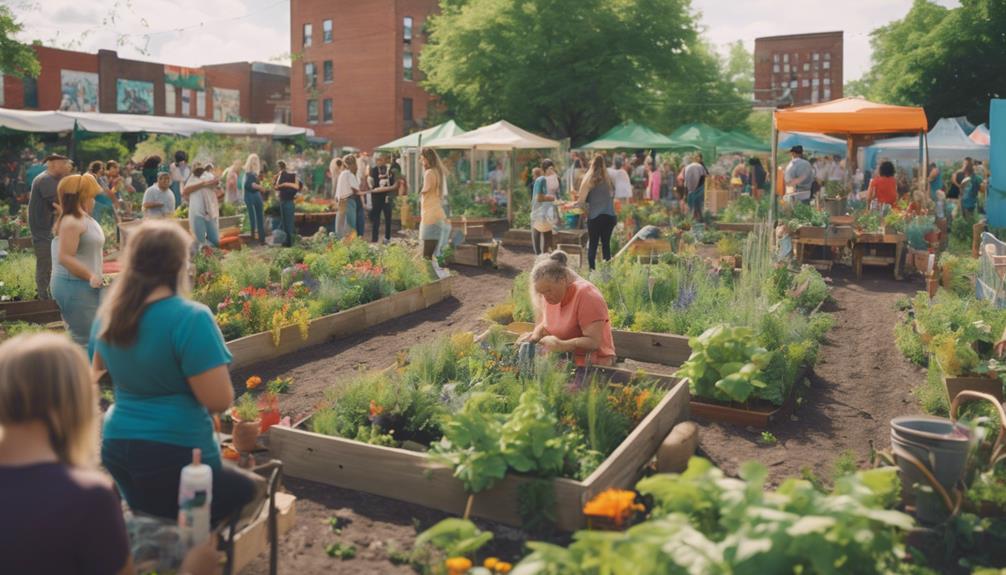
Beyond the consultation rooms, Detroit's vibrant network of community gardens and green spaces serves as a thriving hub for herbal education, community engagement, and sustainable practices. We're witnessing a resurgence of herbalism in these green oases, where residents are reconnecting with ancestral healing practices and reclaiming traditional knowledge.
- Local organizations like HWB Detroit and Herbalists Without Borders are driving this movement, promoting herbal education, empowerment, and self-care within these community gardens.
- These green spaces have become crucial hubs for education, healing, and cultural reconnection through herbalism and plant-based healing.
- By fostering community engagement and sustainable practices, Detroit's community gardens are cultivating a new generation of herbal enthusiasts, contributing to a growing movement towards self-sufficiency and environmental stewardship.
Frequently Asked Questions
What Medicinal Plants Grow in Michigan?
We Michiganders are lucky to have a diverse range of medicinal plants growing in our state. Echinacea, Goldenseal, and St. John's Wort are just a few examples of the many medicinal plants that thrive here.
Native plants like Black Cohosh, Wild Ginger, and American Ginseng also flourish in our ecosystems.
And let's not forget medicinal trees like White Pine, Elderberry, and White Willow, which are abundant in Michigan.
Where Do Herbalist Make the Most Money?
We're not going to sugarcoat it – as herbalists, we're in it for the benjamins, right?
So, where do we make the most money? Urban areas like Detroit, surprisingly, top the list. With high demand for alternative healing practices, we can rake in the cash.
Specializing in niche areas like wild plant foraging or culturally specific remedies can also boost our earnings.
Is There a Demand for Herbalists?
We're seeing a significant demand for herbalists, driven by the growing interest in alternative healing methods and plant-based remedies.
As people seek natural solutions for their health issues, herbalists are in a unique position to provide personalized guidance and treatment plans.
With the rise of herbal medicine, we're witnessing a surge in demand for skilled herbalists who can educate and support individuals in their wellness journeys.
Who Is Brianna Cherniak?
It's no secret that you're wondering: 'Who's this Brianna Cherniak everyone's talking about?' Well, let's fill you in!
Brianna Cherniak is a Detroit-based herbalist and community organizer, founder of EverWild Apothecary, and a passionate advocate for accessible herbal medicine and sustainable healthcare.
She's all about empowering individuals through herbal practices, and we're excited to learn more about her work in promoting a healthier, more natural lifestyle.
Conclusion
As we explore the thriving world of herbology in Detroit, we're struck by the impact it has on the community. Did you know that 75% of Detroit residents have used herbal remedies at least once in their lifetime?
This statistic underscores the significance of holistic healing in the city. From community gardens to local herbalists, Detroit's herbology scene is a demonstration of the power of natural remedies.
As we investigate the city's herbal landscape, we're excited to discover the many ways it's fostering wellness and connection.

